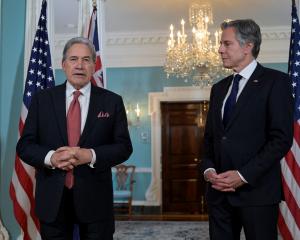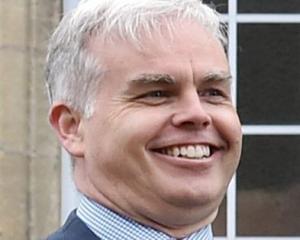The fact that Tariana Turia seems to be the only MP who recognises the import of Frank Bainimarama's objective of installing a truly democratic process in Fiji is of some significance.
It is clear that the Prime Minister and many others are not aware that democracy vaka viti (in the Fijian manner) has little in common with real democracy.
In order to understand the present situation, it needs to be recognised that the Fijian population is not homogeneous, but is distributed into regional groups with well-defined territories, and headed by chiefly families with hereditary titles of "ratu".
Subsequent to a period of inter-tribal warfare, there has been a recognised ranking of the territorial units and their ratu.
Possibly the most senior territory is Bau, which is home to the Cakobau dynasty, followed by Lau, with the Tui Nyau (the king of Lau).
Ratus (and possibly other dignitaries) are accorded an extraordinary level of respect. In my first year at the Central Medical School in Fiji, in 1955, I hired, as a laboratory technician, a young Lauan who had been educated at Queen Victoria School.
But every time I entered my office, where he was working, he fell to his knees.
It took some time to wean him from such behaviour.
But the background to this act of deference became clear when I visited the chiefly village of Lakemba, the home of the Tui Nyau, and observed the effects of the Tui Nyau emerging from his bure.
Everyone in the village fell to their knees and remained there until he went back inside.
In the village, Fijians were required to wear a sulu; shorts and trousers were forbidden.
All turtles caught in Lauan waters were the property of the Tui Nyau, and three large turtles were propped up against his bure.
Because of common sporting interests I had become friendly with Ratu Edward Cakobau, and when visiting him in his office I was intrigued by the fact that when any of his staff entered his office, they fell to their knees.
So given this general recognition of their inherent superiority, it is not unexpected that the assemblage of ratus, known as the Great Council of Chiefs, should carry a great deal of authority, which would become manifest during elections.
At the village level, the village headman, turanga ni koro, operated in an authoritative manner.
So at least up to the end of 1961, on Thursday mornings the men of the village would be assembled and sent off to do specific tasks.
A group would be sent to clear a drain; another group would cut grass; another group would repair the roof of a bure.
So in general, the decisions and lifestyles of Fijians were directed by senior authorities.
The Indo-Fijian community developed from labour imported to work in the sugar cane industry, and is now almost as large as the Fijian population. But as most of the land in Fiji is owned communally and cannot be sold, Indians had to lease suitable land from Fijian groups in order to grow sugar cane.
As the sugar cane became established, Fijians would be hired to weed and harvest the cane, so this relatively small industry contributes to both the local and regional economy. What could be important is that the Indo-Fijian community was politically independent.
In 1987, when the late Dr Timoci Ulivuda Bavadra was elected prime minister on the voting strengths of the Indo-Fijians and Fijians who ignored their voting instructions from the Great Council of Chiefs, via the turanga ni koro, he was quickly deposed in the first coup led by Sitiveni Rabuka.
About six months later, after a second coup, the Republic of Fiji was formed.
This action led to the expulsion from the Commonwealth and criticism from the United Nations.
The resulting constitution in 1990 was so heavily loaded in favour of Fijians it was quickly discarded.
Subsequently, in 1997, a constitution formulated by Sir Paul Reeves, a Fijian and an Indo-Fijian was adopted.
But again, there was a balance of power in favour of Fijians, as there was constitutional recognition of the great Council of Chiefs, which had the power to elect the president and appoint 14 of 32 senators.
So once again, there was divergence from true democracy.
Therefore, it can be anticipated that under Mr Bainimarama's watch, a new constitution will be produced which will provide for an elected president and a fully elected senate.
Although his mode of action has been a cause for criticism, it seems Mr Bainimarama will persist with his vision to introduce democracy into Fiji.
While the expulsions from various organisations that have been put into effect were predictable, it is unclear what the effects of those expulsions will be.
It can be expected that more support from China will be forthcoming, possibly making Fiji a target for Chinese tourists, to the detriment of the New Zealand tourist industry.
On a more local note, as Fiji was the usual supply route for other Pacific territories, how will those supplies be obtained in the future?
From a moral viewpoint, how is it possible that world leaders can support or prop up non-democratic governments, but criticise Mr Bainimarama for trying to introduce real democracy into Fiji?
•Les Simpson lived in Fiji from 1955 to 1961 where he was a WHO-appointed lecturer in medical biology at the Central Medical School.












